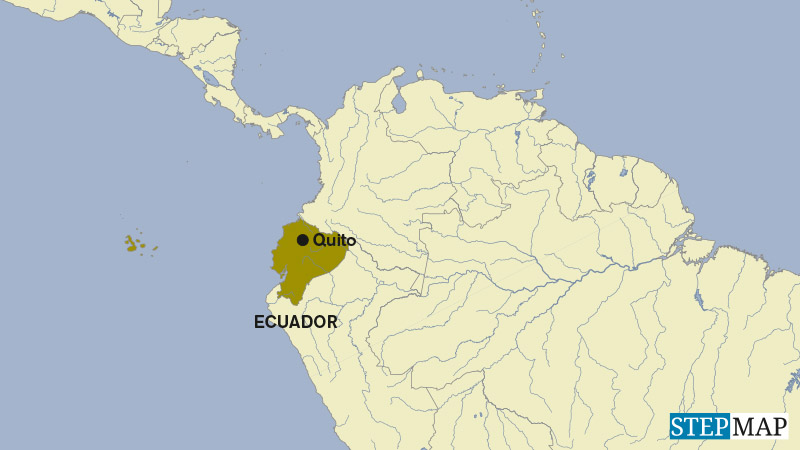Climate
Greenwashing
climate policy, in practice, they continue to promote centralised, unsustainable infrastructures. All summed up, the World Bank is standing in the way of adequate policymaking.
[ By Daniela Setton ]
The global community faces a dilemma. The International Energy Agency (IEA) estimates that consumption of primary energy will increase by more than 50 % by 2030 worldwide, with the global energy market growing by more than two thirds. According to the IEA, a large share of demand will have to be covered by fossil fuels. However, it is known that their use emits carbon dioxide, which accelerates climate change.
Today, one of the hottest international issues is how to reconcile climate policy with energy policy. Approaches mooted include the promotion of climate-friendly technologies, investments in developing countries, adequate tools as well as the general policy environment.
In 2005, the G8 requested the World Bank to develop an international “Clean Energy and Development Investment Framework” (CEIF). The aim is to mobilise resources for meeting growing demand, with emphasis on
– improving energy access in sub-Saharan Africa,
– supporting the transition to low-carbon economies, and
– assisting client countries to adapt to climate change.
The Bank thus coordinates an international process involving the governments of major industrial nations, big newly-industrialising nations, other multilateral development banks as well as the World Business Council for Sustainable Development (WBCSD) and the World Economic Forum (WEF), two industry associations.
According to the World Bank, the necessary investments in the power sector of developing countries will amount to some $ 165 billion annually, only half of which is available from current sources. An additional $ 30 billion is needed to finance the transition to a “low-carbon economy” based on “clean” technologies. Other under-funded aims are to improve the access to energy for those 2.4 billion people currently without reliable supply, and to help developing countries adapt to climate change. At its spring conference this year, the World Bank adopted an ambitious action plan, which supposedly reconciles policies on energy, development and climate.
Wrong priorities
In the CEIF context, however, the World Bank is actually promoting an agenda that has little to do with effective climate protection and the bitterly needed battle against poverty. Rather, it is about expanding centralised, fossil-based and other unsustainable infrastructure. Buzzwords like “clean energy” or “low-carbon economy” are used in a confusing manner. Anyone who delves deeper into the matter will find that these terms serve to greenwash a massive expansion of conventional energy systems.
True, the World Bank stresses renewable energy sources and energy efficiency as vital, and promotes these aims in some projects. However, the Bank’s financial commitment is modest. In 2006, it only invested $ 153 million (merely four percent of its total energy portfolio) in renewables. Though that share is rising currently, the funds will obviously not suffice to radically promote renewables all over the developing world.
At the same time, the World Bank supports supposedly “efficient” or “clean” coal technologies such as IGCC power plants (the acronym stands for “integrated gas combined cycle”) with carbon capture and storage (CCS). The Bank, however, neither mentions the high costs of this technology, nor its efficiency problems, nor the related environmental risks. This technology will not be commercially viable for another 15 to 20 years. Emphasising it therefore does not mark any substantial deviation from conventional energy provision.
Its loans reveal the World Bank’s priorities. The Bank is financing yet more carbon emissions. The World Bank Group (WBG) increased funds for fossil fuels in fiscal 2006 by a full 93 % (to $ 869 million). It has financed and promoted gas and oil projects in Egypt, Bangladesh, India, Pakistan, Chile, Colombia, Russia, India, Venezuela, Chile, Vietnam and Yemen (Maynhardt-Gibbs, 2007). In fiscal 2007, roughly $ 600 million were pledged to oil and gas projects.
The World Bank continues to support controversial projects, such as the Chad-Cameroon pipeline, the West African gas pipeline or the Baku-Tbilisi-Ceyhan pipeline. Usually, such projects are funded without investigation of all possible alternatives and ways to increase efficiency. Typically, those to benefit most are industry giants like BP, Petrobras and Chevron, or infrastructure suppliers like Halliburton and Siemens.
Misguided trust in “the market”
For good reason, the prominent economist Nicholas Stern calls climate change “the greatest market failure ever”. It seems dubious, therefore, to suddenly expect “the market” to ensure climate protection. Nonetheless, the World Bank continues to stress market mechanisms as the main way of protecting the climate.
It continues to promote “aggressive sector reform” in developing countries, with the aim of mobilising private investors. The Bank has been supporting such market-based programmes since the 1990s, emphasising goals such as privatisation, commercialisation, competition, and tariffs that cover costs. The social and environmental track record of these reforms is miserable, however. Again and again, power tariffs rose, with fewer poor people able to afford electricity than before. The unbundling of power generation, transmission and distribution, moreover, has not significantly boosted investments in energy efficiency and renewables, nor has it spawned better demand management.
World Bank policy, however, restricts the scope for countries redesigning energy systems. In the market-based model, all crucial decisions – about energy sources, for instance – are up to private investors. The CEIF sticks to this ideology, accommodating the WBCSD and the WEF as though nothing had ever gone wrong. Well-established multinational corporations dominate these industry associations, which consider various coal technologies as well as nuclear power promising. In contrast, no representatives from the renewables sector were even consulted for the CEIF.
Unsurprisingly, the World Bank’s “Climate Protection Programme” also promotes large dams (such as Bujagali in Uganda or Nam Theun II in Laos), even though such projects have proven problematic in environmental and social terms. While it is sensible to make current infrastructure as effective and environmentally friendly as possible, it is counterproductive to invest in additional infrastructure of problematic nature – be it based on fossil fuels, nuclear power or hydropower. All over the world, we need decentralised, renewable systems based on local resources.
In the CEIF context, emissions trading is considered an important tool to fund the transition to a “low-carbon” economy. The World Bank therefore promotes such trading. In doing so, however, it is exacerbating the trend towards large-scale projects. After all, certification and planning entail massive paperwork that small projects for local, renewable energy supply systems can hardly afford. Moreover, there is the risk of abuse. Katherine Sierra (2006), vice president at the World Bank, knows of such limits: “Experience tells us that carbon finance has had a limited impact in promoting larger scale renewable energy projects.”
The World Bank did not invent emissions trading; this approach is part of the Kyoto protocol. Nonetheless, it is problematic – not least, as it further postpones urgent structural change in industrial nations, by allowing these countries to meet obligations to reduce emissions by offsetting them in other parts of the world.
Such contradictions not only haunt the World Bank’s progressive climate rhetoric and the damaging policy it masks, they are also evident at other multilateral agencies. For instance, the Asian Development Bank (ADB) has launched a “Clean Energy and Environment Programme”. A positive aspect is that the ADB will increase its expenditure on energy efficiency to at least $ 1 billion dollars per year by 2008; furthermore, it plans to support small projects.
However, since 2002, the ADB has also considerably ramped up its commitment to the fossil sector. In its new energy strategy, it not only announces further support for “cleaner” coal, natural gas and oil, but also to increase funds, especially in the gas sector (ADB 2007b: 9). There is, however, no binding commitment to a quick, widespread dissemination of renewables. The ADB also promotes emissions trading (ADB, 2007).
Conventional approaches
Obviously, the World Bank and the ADB intend to meet humankind’s growing demand for energy by conventional means – despite the lip service paid to climate matters. The strategies reflect the interests of the firmly established energy industry as well as the current structures of the global economy. While small success stories are certainly possible, necessary global reform is being hampered. The emphasis on centralised infrastructures only further ties humankind to an inefficient energy supply system that harms the climate and excludes some 40 % of the world’s people. It is common knowledge, moreover, that centralised power systems waste some two thirds of the energy fed into them.
In the next 10 to 15 years, the international community will have to completely restructure the global energy supply system. Governments will have to invest huge sums in support of renewables and energy efficiency, sponsoring new technologies to generate and apply power. The effort will be worth it, if one considers the costs of the current system to humankind as a whole. In contrast, every dollar still invested in misguided conventional infrastructures cannot but worsen the global crisis.
Only consistent promotion of renewables along with drastically improved energy efficiency will reconcile climate protection, energy supply and the fight on poverty. This approach is viable, as successful programmes in India and elsewhere have shown. On the other hand, support must stop for unsustainable, fossil-driven energy facilities such as pipelines and centralised power plants, and subsidies must end for gas and oil firms. Indeed, despite its clear commitment to renewables, not even Germany’s Development Ministry has positioned itself clearly in this respect. The World Bank’s climate and energy policies, of course, can only be as good as those of its most influential shareholders.
In view of the World Bank’s tendency to stick to fossil fuels – a penchant it shares with other multilateral institutions – it seems best to establish an International Renewable Energy Agency for the sake of a “new energy future”. To its credit, the grand coalition currently governing Germany has declared its intention to support such an agency.










